The Books of the Bible is a Bible that was developed for a unique reading experience. It contains no chapter or verse numbers – just the text. It’s also arranged differently than the standard book arrangement. The books are arranged by literary form.
Pros
- Designed for reading in the original literary forms
Cons
- Book order difficult to get used to
Features
- 2011 NIV
- Single column
- Paragraph format
- Poetry in verse format
- Books arranged by literary form
- Black letter
- 10/12 font
- End notes
- 1908 pages
- 9.25 x 6.5 x 1.5
- ISBN: 9780310400578
Cover and Binding
This edition is hard cover with a glued binding. It comes with a dust jacket that has the same graphics as the cover. Printed on the inside the dust cover is a list of features. I’m partial to earth-tones and I love the color-scheme of the cover.
Paper and Print
The paper is thin. It’s the same paper found in other Zondervan study Bibles. It’s not as opaque as I’d like but it’s not too distracting.
The text looks really good, especially for the thin paper. I’m guessing on the font size, but to me it looks like a 10-point with a 12-point leading. The print is consistent throughout. It’s darker than I expected for such thin paper. It is very readable. It could be improved with line-matching.
Layout
The page layout looks like a regular book. There are no chapter or verse numbers to hinder reading (except for Psalms, which has chapter numbers). There are spaces between the chapters, so you can see where one chapter ends and another starts. In some verses there is a faint dot. This dot shows that there is a note at the end of the book for that portion of text.
The book name appears at the top of the page. If the group has been grouped in a range of books (for example, Luke and Acts are grouped together), all of the book names appear at the top of the page. The current book is in bold and the others are printed in a fainter text.
At the bottom of the page is the range of chapters and verses that appear on that page. The chapter and verse numbers are printed in faint text.
End Notes
Notes appear at the end of each book or grouping of books. The notes show the page number the note refers to, the word it refers to, and then the note itself. The notes include page numbers for cross referencing, translation notes, manuscript variants, distance, etc.
Book Introductions
Book introductions are called “Invitation to [book name]”. The invitation takes up a page or two and talks about the setting and covers some of the major points in the book. The books are often compared with other books of the Bible.
Book Arrangement
The books are arranged differently than the standard Biblical arrangement. They’re arranged according to literary form. The purpose is to read the Bible in large blocks. This ends up being an arrangement by author for most books. All of John’s books are at the end with Revelation. This is difficult for me to follow because I don’t expect to look near Revelation for the book of John. I could understand the arrangement if there was a daily reading plan and the books were arranged according to that order, but there’s no reading plan and the arrangement doesn’t always seem to serve a purpose. If I was reading from start to finish I would want to read the gospel of John with the other gospels. I would read by theme rather than literary form.
Extras
Table of Weights and Measures – a table that covers weights, lengths, and capacity.
Drama of the Bible – gives a short overview of the Bible, dividing it into six acts (like acts of a play).
Living the Script – instructions to study and apply the Bible to our lives.
About The Books of the Bible – how to use this Bible. it covers how The Books of the Bible presents the Scriptures in their literary forms and covers the features.
A Word About the NIV – the NIV preface.
One thing I would like to see added is a reading plan. This edition is designed for reading but there’s no reading plan to help keep track of or guide your reading.
Conclusion
The Books of the Bible is definitely unique in its presentation. The point of this Bible is to promote Bible reading. It is free of distractions, allowing the Scriptures to be read like literature. The books are arranged according to literary form with the purpose of reading in large blocks. It is very readable. I don’t recommend it as a carry Bible, but it should make a nice reading Bible.
Zondervan provided this Bible free for review. I was not required to give a positive review- only an honest review.

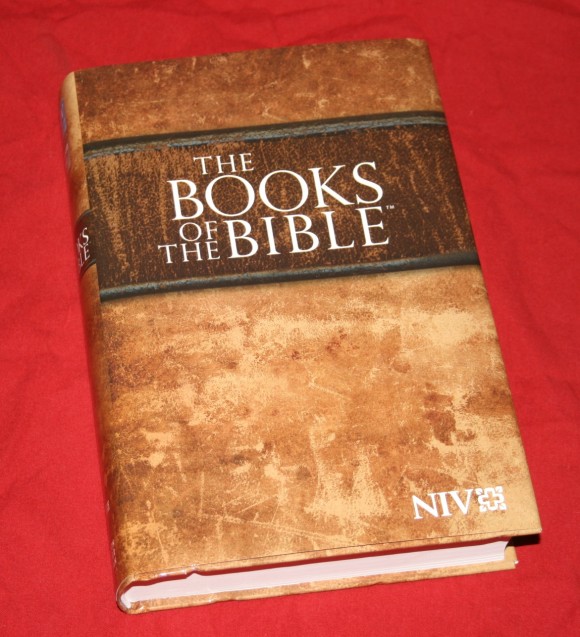
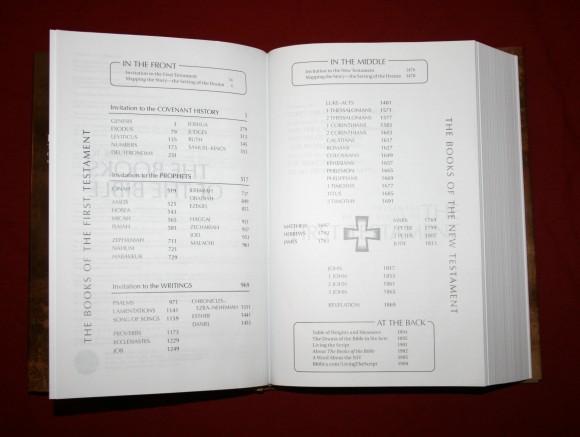
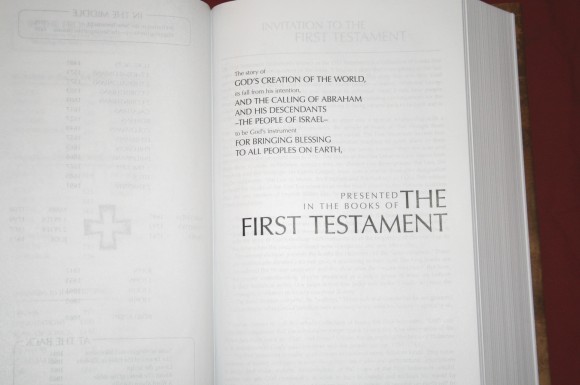
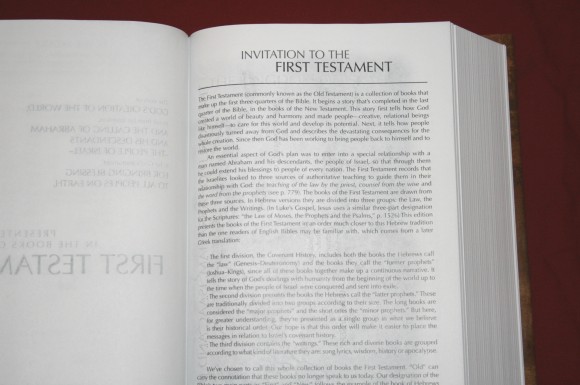
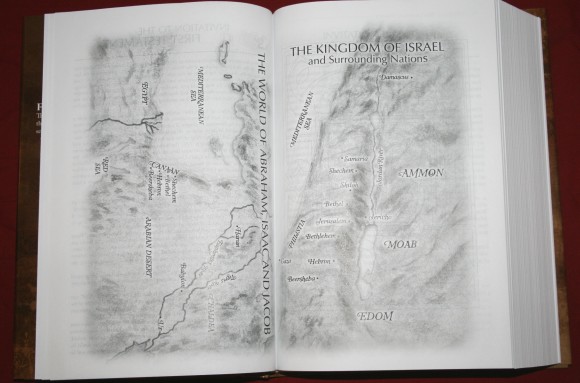
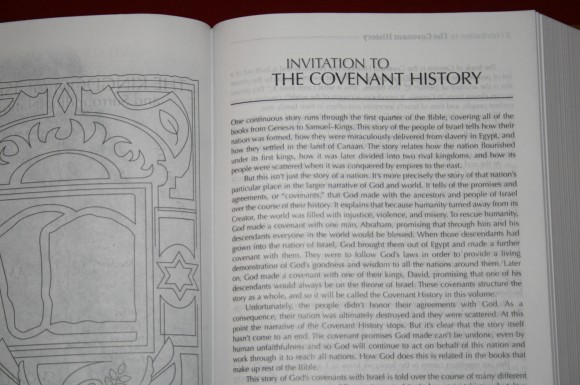
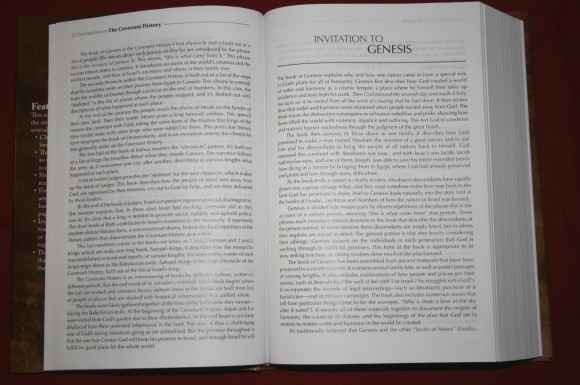
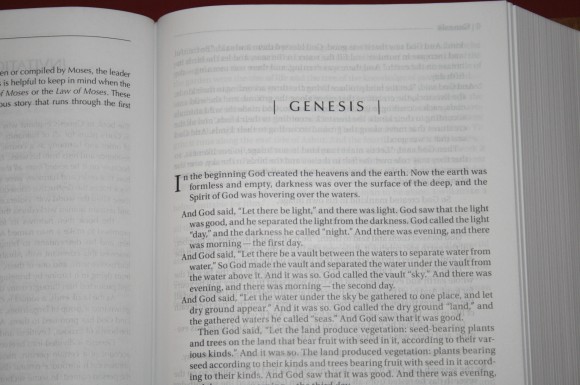
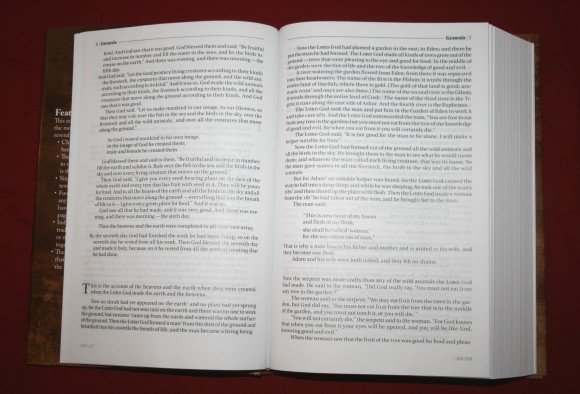

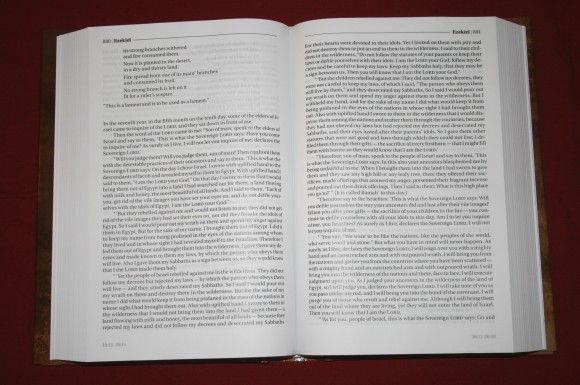
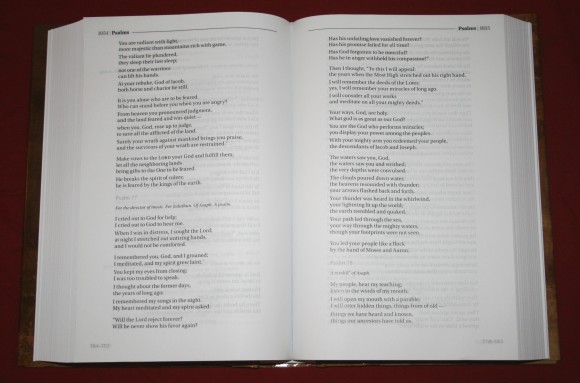

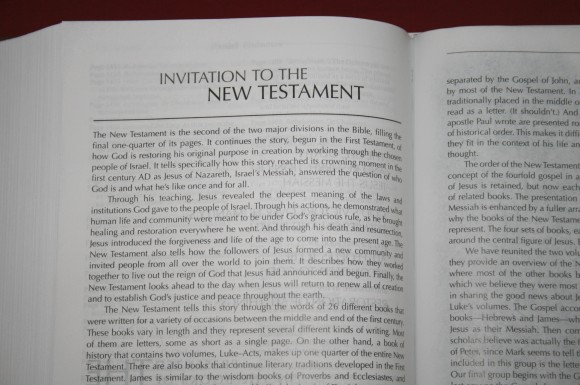
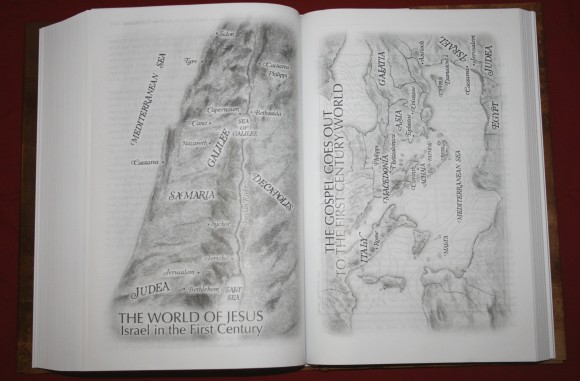
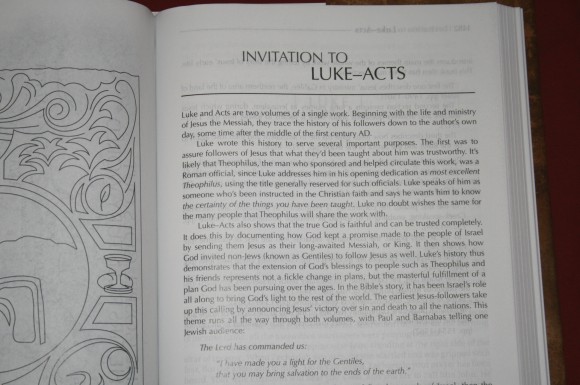
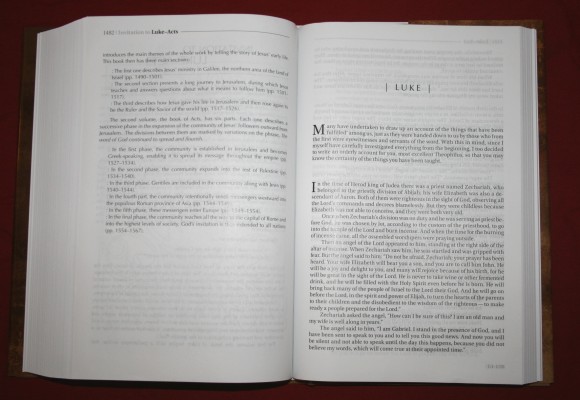

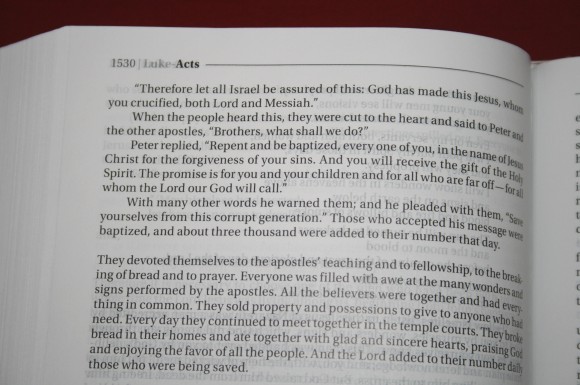
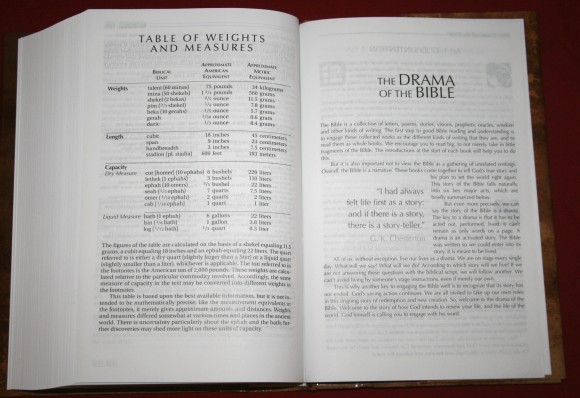
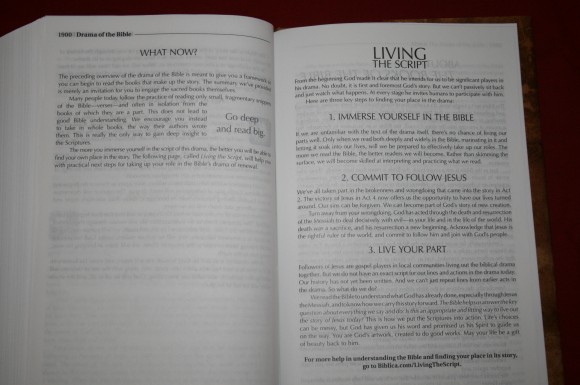

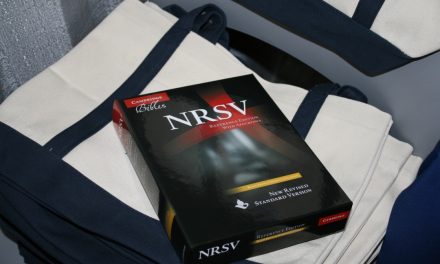
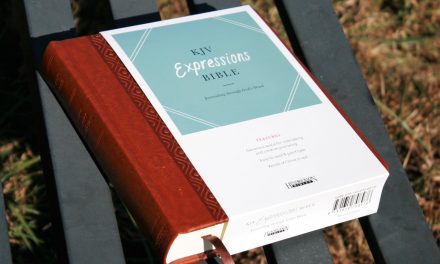







Thanks for the review Randy,
I’ve been using this bible for a few months now and it’s become my primary reading bible and as you say it’s definitely not a reference bible. The book order I kind of like and to me makes more sense than the order which was decided upon in the distant past. I mean what we refer to as the Old Testament is exactly the same as the Jewish Bible the Tanakh, but in a different order. And I’m sure index tabs would easily fix the issue with locating the different books. I agree with your assessment on the size of the font, which is perfect for a reading bible. And I don’t believe it would be too much of a distraction if Zondervan were to print chapter and verses using the same faint print that is found in the chapter and verse ranges printed at the bottom of the pages. There is some line matching throughout this edition, but in numerous places the line matching is not consistent, which effects readability. And there is some ghosting of the text, but the paper is nicer than I first thought. For instance, I’ve done extensive underlining with Micron .005 pens using different colors without any bleed through. Another nice feature of this bible is that the different books all begin and end on separate pages. I’ve also found that the invitations/introductions summarized the books very well. And so far I’ve only found one typo, which is located in the invitation to the book of Philemon. Actually, I didn’t think the signatures were glued, I mean this bible lies as flat as any sewn bible that I own. Overall, I really like the concept of this bible, however I would like to see the line matching improved along with an edition with a better binding. Apparently this bible has gained some attention, since Crossway is scheduled to release a similar edition in the ESV translation in January 2014. There’s a very interesting video clip of a pastor recommending using the Books of the Bible to get people and church congregations more involved with bible reading, which as your review clearly indicates is the sole purpose of the Books of the Bible.
I highly recommend watching the – 10 minute video below.
https://www.youtube.com/watch?feature=player_embedded&v=ZlB9mp9PCr4
Hi Norm. Thanks for the link and the info on the Crossway ESV. I really like this format. It makes a great reading Bible. I would love to see this available in all the major translations. I could be wrong on the binding. It does lay flat very nicely.